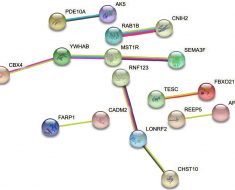Should patients with metastatic colorectal cancer (CRC) who respond to first-line treatment receive maintenance therapy or are they better off on active surveillance?
In a recent trial designed to explore this question, British investigators made a strong case for active surveillance over maintenance therapy.
The researchers found that patients with metastatic CRC randomized to maintenance therapy with oral capecitabine (Xeloda) showed improved progression-free survival (PFS) compared to those being actively monitored — 3.88 vs 1.87 months.
But that benefit came at a cost. Patients on capecitabine experienced much worse toxicity and showed no overall survival benefit — 14.8 months in the capecitabine arm vs 15.2 in the surveillance arm.
The FOCUS4-N trial supports “the use of treatment breaks as safe management alternatives for patients” after induction, lead author Richard Adams, MD, an oncology professor at Cardiff University, Wales, and colleagues conclude in a study published in the Journal of Clinical Oncology.
Current treatment standards either require or recommend that patients with metastatic CRC receive maintenance therapy after induction chemotherapy, at least until they progress or experience excessive toxicity.
Although maintenance strategies have typically demonstrated a PFS benefit, that advantage may come at “the expense of ongoing…toxicity.”
Adams and colleagues wanted to explore how patients would fare on an oral maintenance therapy with capecitabine compared with active surveillance.
In the trial, researchers randomly assigned 254 patients who had responded to first-line therapy or had stable disease to either capecitabine (n = 127) or active monitoring (n = 127). Subjects were treated at 88 hospitals in the UK from 2014-2020. Most patients had widespread synchronous metastatic disease. About half had unresected primary tumors, and the majority had received doublet chemotherapy induction, which was irinotecan-based in 57%.
The authors found that patients receiving capecitabine maintenance therapy showed significant improvements in PFS (hazard ratio [HR], 0.40; P < .0001), but also encountered considerably more toxicity than the surveillance group — including grade 2 or higher fatigue (25% vs 12%), diarrhea (23% vs 13%), and hand-foot skin reactions (26% vs 3%).
Perhaps most notably, the treatment group did not experience an overall survival benefit (HR, 0.93; 95% CI, 0.69 – 1.27; P = .66).
Overall, the authors noted, the main advantage of active maintenance was to delay the return of aggressive chemotherapy combinations for a few months.
With previous trials reporting pretty much the same findings, there is now “overwhelming level-one evidence” that surveillance is an “appropriate” option with “less time on therapy, lower toxicity, and in a number of studies, better quality of life,” which are all important factors for patients, according to Adams and colleagues in a follow-up letter.
A Viable Option
The current study pushes back on existing standards, which support maintenance therapy and can prevent patients from being offered active surveillance.
According to Adams and colleagues, “FOCUS4-N provides additional evidence to support the use of treatment breaks as safe management alternatives for patients who are stable or responding to first-line treatment for [metastatic] CRC.”
In addition, the FOCUS4-N trial suggests that oral capecitabine alone — instead of alongside intravenous bevacizumab (Avastin) every 3 weeks — is probably adequate for mCRC maintenance.
“It has been shown that single-agent bevacizumab is both ineffective and highly uneconomic” in the mCRC maintenance setting, “suggesting that it may be the capecitabine element of the combination that” provides the PFS benefit, the team noted.
An editorial accompanying the study also concluded that “treatment holidays are an equally viable and more cost-effective alternative” to maintenance, and one of special interest to patients looking for a break after intensive induction.
“For patients, caregivers, and oncologists alike who are hesitant to…stop therapy completely, it is important to note that” at least in trials, patients under surveillance “continue to be vigilantly monitored, including imaging every 8-12 weeks and symptom assessment every few weeks,” Pashtoon Murtaza Kasi, MD, medical oncologist at Weill Cornell Medicine/NewYork-Presbyterian, Manhattan, said in his editorial.
Interestingly, Kasi pointed out, the trial found no difference in quality-of-life scores between the study arms in the FOCUS4-N trial.
The two groups scored similarly on mobility, self-care, usual activities, anxiety, and depression, and patients in the capecitabine group reported slightly less pain and discomfort, which may have occurred because of delayed disease progression.
“Although it is somewhat reassuring that maintenance approaches do not adversely affect overall quality of life and functioning, it does not mean that these regimens are free from side effects,” Kasi writes, adding that it’s possible the surveys missed the impacts of increased toxicity with maintenance therapy.
Caveats to the Study
A letter published in the Journal of Clinical Oncology raises questions about the generalizability of the FOCUS4-N results.
In the letter, Annika Kurreck, MD, and colleagues from Charity-University Medicine Berlin, Germany, highlighted that the trial only included patients without actionable biomarkers, which likely meant the study population had particularly aggressive disease. This possibility is supported by the “dramatically short” PFS reported in FOCUS4-N compared with prior maintenance vs surveillance investigations.
In addition, the letter writers caution that the study was underpowered to detect an overall survival benefit.
“Therefore, it might be hypothesized that FOCUS4-N comprised a cohort of patients with a rather aggressive tumor biology and/or high tumor load, leading to a quick failure of any de-escalation treatment strategy,” Kurreck and colleagues write.
In a response letter, Adams and his team countered that there’s no consistent evidence from past trials suggesting that patients with poorer prognostic features are unfit for surveillance. “We believe that it is a common misrepresentation of the evidence that all patients with worse prognostic features need to be maintained on active but toxic combination therapies for longer,” they said.
Instead of a blanket approach, maintenance vs surveillance should be “an assessment guided by the clinician listening to and guiding the patient rather than a molecular or biologically measurable parameter,” they write.
Adams and colleagues agreed that identifying subgroups of patients who are more likely to benefit from maintenance vs surveillance is required research, which “we plan to undertake.”
The work was funded by Cancer Research UK and the National Institute for Health Research. Many of the investigators had industry ties, including Adams who reported various relationships with and payments from Merck, Amgen, and others. Kasi also had ties to several companies, including Bristol Myers Squibb, Lilly, and AstraZeneca. Kurreck and the other letter writers had numerous company ties as well, including relationships and payments from Roche, maker of bevacizumab.
J Clin Oncol. Published November 20, 2021. Full text, Editorial
J Clin Oncol. Published online February 22, 2022. Letter to the Editor, Author reply
M. Alexander Otto is a physician assistant with a master’s degree in medical science and a journalism degree from Newhouse. He is an award-winning medical journalist who worked for several major news outlets before joining Medscape and is also an MIT Knight Science Journalism fellow. Email: [email protected].
For more from Medscape Oncology, join us on Twitter and Facebook
Source: Read Full Article





